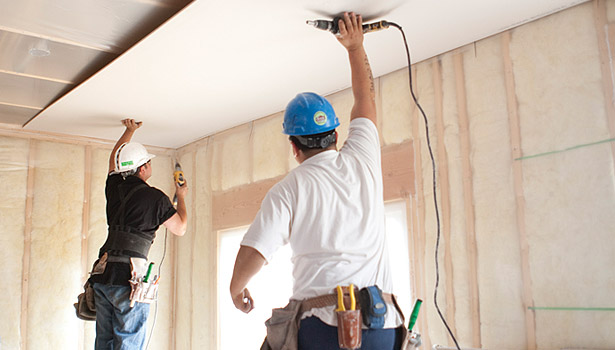
Many folks want to do home improvements, but have no idea how to get started. Most home improvements are not that hard to handle if you sensibly educate yourself and prepare thoroughly ahead of time. Use the tips in this article during your next home improvement project.
When you are considering home improvement, think about your surroundings so your improvements make sense. For instance, having an uncovered deck in Arizona or a sun room that has no ventilation in Michigan would be nonsensical renovations that will have potential buyers questioning your house upkeep decisions. Keep the local climate in mind when beginning a project.
Update your bathroom to make your house feel like a home. Every member of the family spends quite a bit of time in this room, but we often overlook giving it an update during a remodel. You can do easy changes by replacing wallpapers, lighting fixtures, and cabinetry, to create a fresh look.
Storage projects are an excellent way to get your feet wet in the home improvement process. If you have a broom closet in your home, consider making it into a small pantry. It is easy to attach small racks to the inside of the door and create a place for canned goods and spices. If you are able to add a deeper shelf, you can also store boxes or kitchen appliances that don’t see much use.
Some home improvement projects are best suited for a group of people. By enlisting the help of the whole family, much more work can be done than would have been accomplished by one person. Neighbors or other friends can even be recruited, in return for the promise of future help from you.
If you are updating or improving your kitchen and will be working in the vicinity of a fireplace or gas line, it is extremely important that you shut off the gas before starting your project. You also need to use extreme caution during the project itself. You could start a fire and hurt yourself if you are not cautious.
Sealing air leaks is an inexpensive way to improve the energy efficiency of your home. Unsealed cracks and openings are one of the leading causes of heat loss in the average home. Common problem areas include around doors and windows, around pipes, wires and ducts that lead outdoors and around recessed light fixtures. Use caulk to seal small cracks and expanding spray foam for larger gaps and openings.
Tame you clutter and label it practically for free. Sometimes we spend too much time thinking about organization and not enough time doing it. Go ahead, sort the jumble of clutter into free cardboard boxes and label the outsides with masking tape and an indelible marker. You can perfect it all later!
As previously stated, a lot of people want to fix things in their house, but don’t have the confidence to get started. With the right information, home-improvement projects don’t need to be difficult. If you remember these hints, you can do it the easy way.
